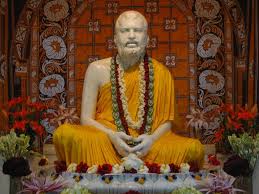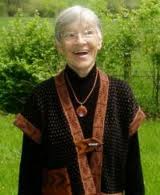 In the course of some other work, I stumbled across a statement that Swami Nikhilananda made about his master, Sri Ramakrishna, which reorganized my view of the latter.
In the course of some other work, I stumbled across a statement that Swami Nikhilananda made about his master, Sri Ramakrishna, which reorganized my view of the latter.
But a word of preface to make it understandable. In “New Maps of Heaven,” (1) I pleaded for some order in the naming of planes, dimensions, and enlightened states. One never knows whether that which one sage calls this state is equivalent to that which another calls that state.
Here’s a prime example. We know Ascension is Sahaja Nirvikalpa Samadhi. The Divine Mother has confirmed the equivalence of the two terms. (2) But I’m about to assert that what Paramahansa Ramakrishna calls “vijnana” also equates with we call Ascension.
This is the passage that so struck me:
“In the nirvikalpa Samadhi, Sri Ramakrishna had realized that Brahman [God] alone is real and the world illusory. By keeping his mind six months on the plane of the non-dual Brahman, he had attained to the state of the vijnani, the knower of truth in a special and very rich sense, who sees Brahman not only in himself and in the transcendental Absolute, but in everything of the world. In this state of vijnana, sometimes bereft of body-consciousness, he would regard himself as God’s devotee, servant, or child.” (3)
“In the nirvikalpa Samadhi” … So he was already at the stage of what most Hindus call Brahmajnana or God Realization, what Ramana calls kevalya nirvikalpa samadhi, seventh-chakra enlightenment. (4)
But he still remained within the seven-chakra system. He hasn’t left it yet. He hadn’t ascended (in this lifetime).
In this state he realized that God alone is real; this world is an illusion. He remained six months in it, so still that the birds nested in his hair. And he attained to the state of the vijnani.
What is beyond jnana or wisdom? Vijnana or perfected wisdom. The Brahmajnani has not ascended; I assert that the vijnani has.
Now, the vijnanis know God in a special and rich sense. They see God everywhere. All the assertions of scripture are proven to be true. They see it around them and have no more need for scripture. When the whole land is flooded, there’s no need for an irrigation canal.
They are in such an Ocean of Bliss that all awareness of the body has left them. There’s nothing but ecstacy in their hearts and even their minds have no centralized focus any more.
Maybe I can end with Bernadette Roberts’ description of her realization of this state, which Sri Ramakrishna calls vijnana and I believe to be Ascension while in the body. In Hindu terms, this would make her a jivan mukta, a person liberated while still alive in the body.

Bernadette Roberts
“Unfortunately what most Buddhist authors define as the no-self experience is actually the no-ego experience [Brahmajnana]. The cessation of clinging, desire, the passions, etc., and the ensuing state of imperturbable peace and joy articulates the egoless state of oneness; it does not, however, articulate the no-self experience or the [higher, ascended] dimension beyond. …
“Four years later, … I came across two lines attributed to Buddha describing his enlightenment experience. Referring to self as a house, he said, ‘All the rafters are broken now, the ridgepole is destroyed.’ And there it was — the disappearance of the center, the ridgepole; without it, there can be no house, no self.
“When I read these lines, it was as if an arrow launched at the beginning of time had suddenly hit a bull’s-eye. It was a remarkable find. These lines are not a piece of philosophy, but an experiential account, and without the experiential account we really have nothing to go on. In the same verse he says, ‘Again a house thou shalt not build,’ clearly distinguishing this experience from the falling away of the ego-center, after which a new, transformed self is built around a ‘true center,’ a sturdy, balanced ridgepole.” (5)
It did not result in a realization; it described the realization – Ascension – that Bernadette had already had and had been unable to find any account of. (6)
Ascension, sahaja samadhi, vijnana, the breaking of the ridgepole, call it what you wish. We’re going through this same process as a planet and it isn’t taking years of concentrated meditation.
We’re being slow-cooked in the Ascension energies hitting the planet, which allow us to cover the same ground the masters did. It is important, however, to know what’s happening, to recognize what just occurred to oneself to avoid confusion and alarm. Hence this article and others like it.
Footnotes
(1) “New Maps of Heaven,” Oct. 25, 2009, at https://goldenageofgaia.com/spirituality/life-death/new-maps-of-heaven/
(2) Steve Beckow: The last question is I’m trying to understand what level of enlightenment Ascension corresponds to. And I think it’s beyond the normal seventh-chakra enlightenment. I think it is what is called — and I’ll make this clear to readers — Sahaja Samadhi. Am I correct?
Divine Mother: Yes, it is beyond what you think of with your seven chakras. … So yes, you are correct, in this question and in this statement. (“The Divine Mother: Come to Me as I Come to You – Part ½,” Oct. 17, 2012, at http://goldenageofgaia.com/2012/10/the-divine-mother-come-to-me-as-i-come-to-you-part-12/. The website is From Darkness Unto Light and the particular page on which this information can be found is http://www.angelfire.com/space2/light11/fdl/e1.html.)
(3) Swami Nikhilananda in The Gospel of Sri Ramakrishna. New York: Ramakrishna-Vivekananda Center, 1978; c1942, 38.
(4) For instance:
“Heart is the seat of Jnanam as well as of the granthi (knot of ignorance). It is represented in the physical body by a hole smaller than the smallest pin-point, which is always shut. When the mind drops down in Kevalya Nirvikalpa [samadhi], it opens but shuts again after it. When sahaja is attained it opens for good.” (Ramana Maharshi in S.S. Cohen, Guru Ramana. Memories and Notes. 6th edition. Tiruvannamalai: Sri Ramanasramam, 1993, 96.)
“[The hole called the hridayam, as small as a pinpoint,] is always shut, being the knot of ignorance which ties the body to consciousness. When the mind drops in the temporary Kevala Nirvikalpa it opens but shuts again. In Sahaja it remains always open.” (Ibid., 81.)
(5) Bernadette Roberts in “The Path to No-Self” in Stephan Bodian, ed. Timeless Visions, Healing Voices. Freedom, CA: Crossing Press, 1991, 137.
If the Buddha had this experience, and we know he went much farther (mahaparinirvana), it would be what we call the ascended state and what he called “nirvana.” Everyone has a different name for the same state.
(6) You’ll find numerous accounts of it on this site and in the various dictionaries in the Golden Gaia database: http://goldengaiadb.com/index.php?title=Main_Page No longer need Bernadette Roberts feel alone!

